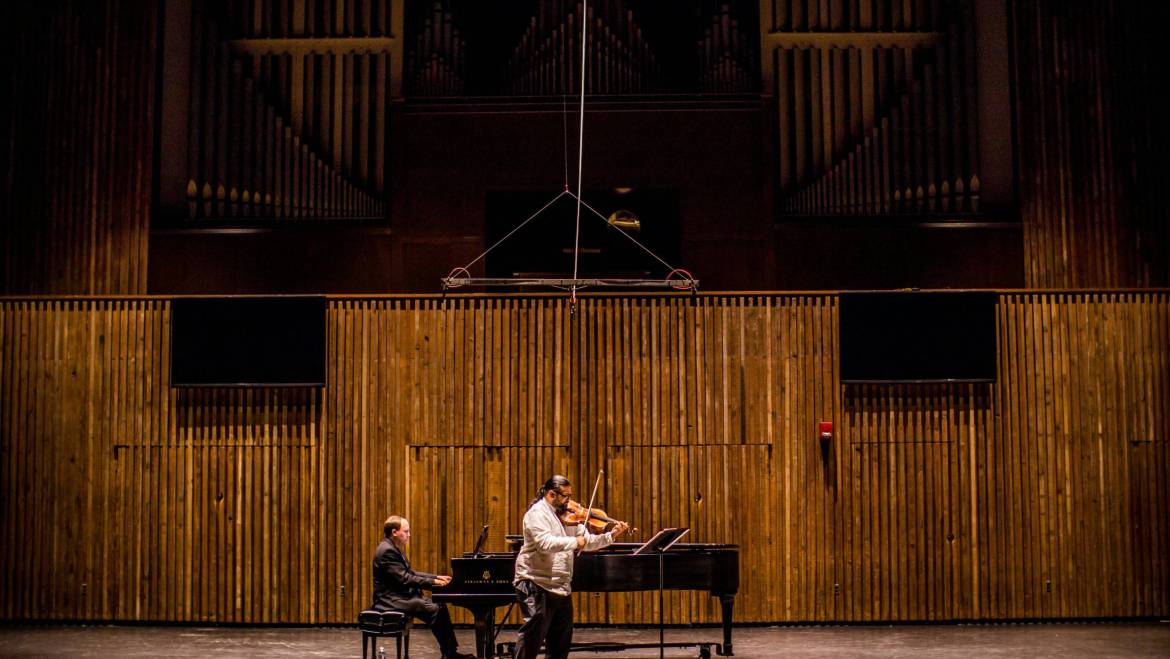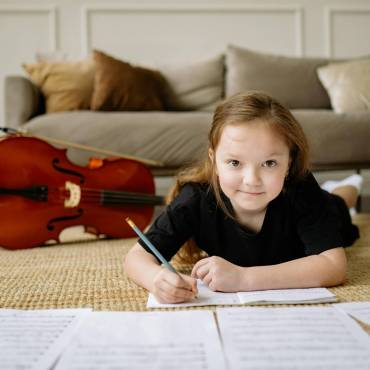Learning a musical instrument can be one of the most rewarding and enriching activities for children. Among the wide array of instruments, the violin stands out as an excellent choice, especially for young beginners. Not only is it versatile and accessible, but the violin also offers valuable foundational skills in music theory, discipline, and emotional expression. In this article, we’ll explore the top five benefits of learning the violin at a young age and why it’s such a fantastic first instrument for budding musicians.
The Violin is an Instrument That Can Be Started at a Young Age
Why Start Young?
Starting musical training in childhood is often linked to various developmental advantages, from cognitive and motor skills to emotional intelligence. The violin, with its accessibility in different sizes, allows even the youngest learners to begin their musical journey. Violin sizes range from 1/32 to full size, making it possible for children as young as three to find a violin that fits their small hands.
Long-term Skill Development
Starting violin early enables children to develop crucial skills over time, like finger dexterity, hand-eye coordination, and a keen ear for pitch and rhythm. Learning to play the violin also instills patience and perseverance, as it can take time to build tone quality and technique. These skills often benefit children well beyond their musical education, carrying over into other academic and life pursuits.
A Lifelong Relationship with Music
Children who start learning an instrument at a young age are more likely to carry that skill into adulthood. The violin’s rich tradition and versatility make it suitable for playing various genres as they grow, from classical and folk to jazz and pop.
Introduction to Treble Clef Reading
Why Treble Clef Matters
The violin uses the treble clef, one of the fundamental clefs in music notation. By learning to read this clef, young musicians gain essential literacy in sheet music, which can translate to other instruments and enrich their overall understanding of music.
Cognitive Benefits of Reading Music
Reading and interpreting musical notation engages the brain in unique ways, improving focus, memory, and spatial-temporal skills. Research has shown that learning to read music notation positively impacts other academic areas, particularly math and language skills. For children, this cognitive stimulation can foster a love of learning that extends well beyond music.
Transferable Skills
Learning the treble clef through the violin opens doors to other instruments that also use this clef, such as the flute, trumpet, and guitar. This foundation can make future musical pursuits smoother, as they’ll already be familiar with the notation system.
Foundation in Music Theory
Building Blocks of Music Theory
The violin provides young learners with a solid introduction to music theory. Concepts like scales, intervals, and key signatures become tangible as students learn to play different pieces. Unlike some other instruments, the violin requires players to intently listen and adjust their pitch, giving them a natural way to understand musical structure and harmony.
Applying Theory in Practice
Studying music theory alongside learning the violin helps children understand what they’re playing on a deeper level. This theoretical knowledge enables them to interpret music with greater expression and creativity, often resulting in a more fulfilling musical experience.
A Gateway to Other Instruments and Advanced Music Education
A solid understanding of music theory sets children up for success if they choose to explore other instruments later on. The skills learned through violin lessons provide a bridge to more advanced musical study and open up the potential for ensemble playing, where understanding harmony and rhythm becomes crucial.

Cost-Effective Options for Families
One of the significant advantages of the violin is its affordability. Violins for beginners come at a variety of price points, and parents can also consider rental options, which are especially popular among families who want to test their child’s interest before making a larger investment. Compared to instruments like the piano or cello, the violin offers a more accessible entry point for young students.
Rental Programs and Community Access
Many schools, community music programs, and local music shops offer rental services for beginner violins. Renting allows families to provide their children with a quality instrument without a large upfront cost. Additionally, as the child grows and needs a larger violin, rentals can be exchanged for the correct size, making it a practical solution for young beginners.
Widespread Availability of Teachers and Resources
Because the violin is a widely taught instrument, there are many qualified instructors, both in-person and online, who specialize in teaching young children. Additionally, online tutorials, apps, and music learning platforms provide extra support for parents who want to help their children practice at home. This accessibility makes it easy for families to find the guidance and resources needed for success.
A Brief History of the Violin
Renaissance Beginnings
The violin we know today originated in northern Italy during the 16th century. Its early ancestors include the fiddle and the lira da braccio, which were common string instruments at the time. The design of the violin as we know it was perfected by renowned Italian craftsmen like Andrea Amati and, later, Antonio Stradivari, whose violins are still celebrated for their exceptional sound quality.
Evolution Through the Baroque Era and Beyond
The violin rose to prominence during the Baroque period, with composers such as Vivaldi, Bach, and Corelli writing complex and beautiful works for the instrument. It continued to be a favorite in classical music throughout the centuries, adapting to different styles and techniques.
The Violin in Modern Music
Today, the violin is found in almost every genre of music, from classical and folk to jazz, rock, and pop. Its adaptability has made it a mainstay in orchestras, chamber music, and solo performances. This rich history and cultural significance make the violin a compelling choice for children who may later choose to explore various musical genres.
By introducing children to the violin, parents provide them with an opportunity to develop confidence, creativity, and an appreciation for the art of music. Whether they pursue music professionally or simply enjoy it as a hobby, the skills and memories gained from learning the violin are invaluable.



Add Comment